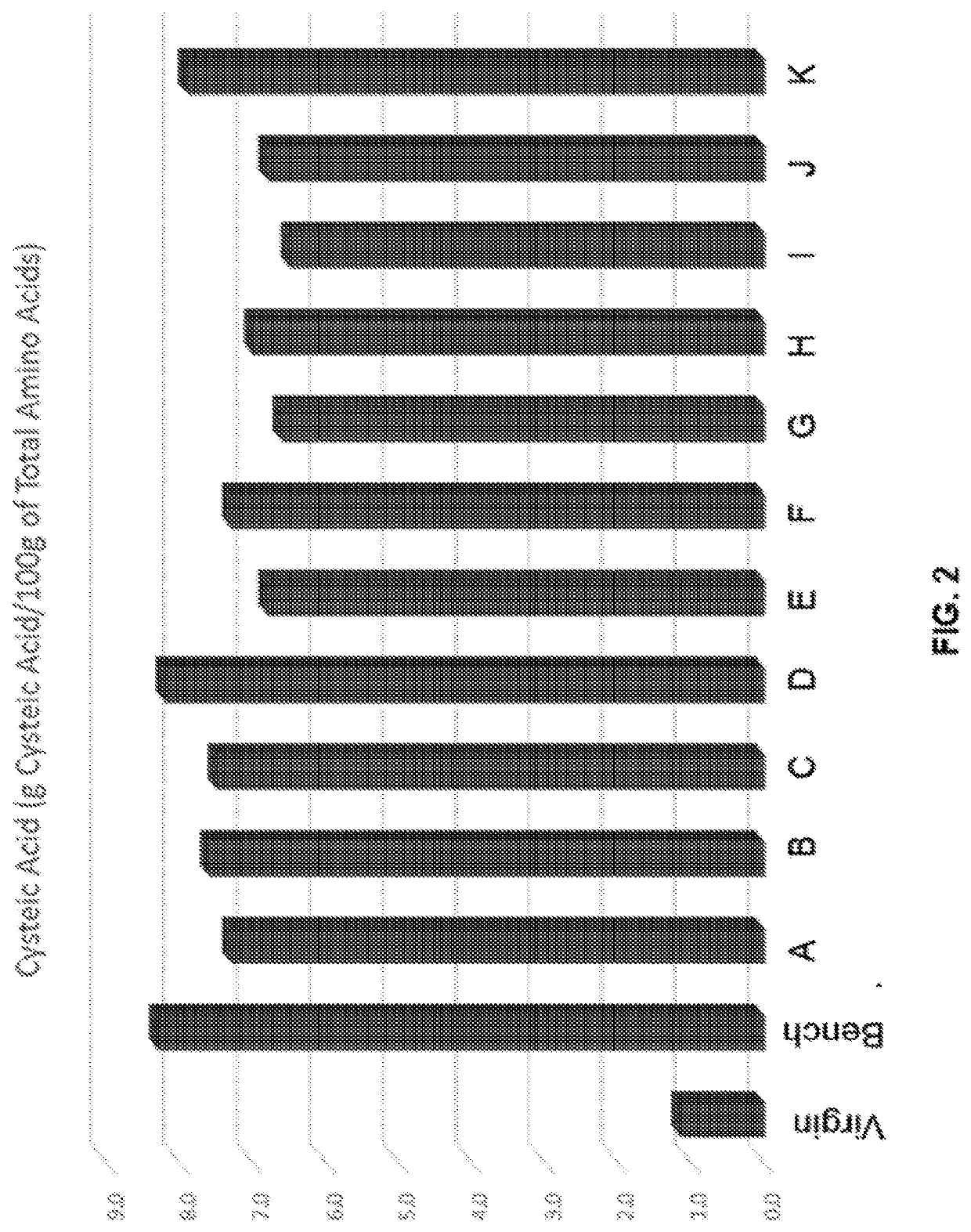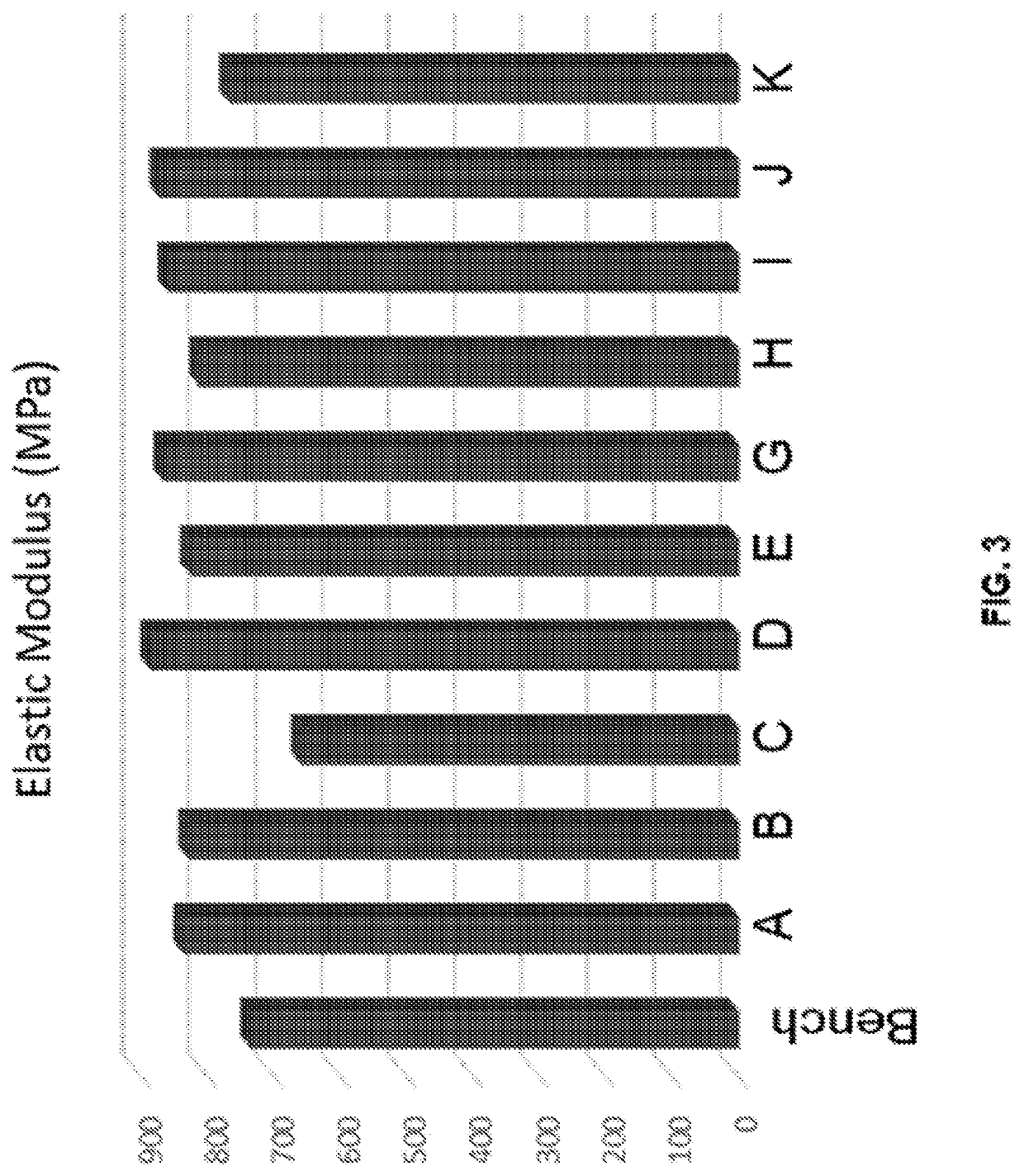Hair lightening compositions and methods of use
a composition and lightening technology, applied in the field of compositions and methods for treating hair, can solve the problems of degrading the cosmetic properties of hair, affecting the quality of hair, and affecting the appearance of hair, so as to improve the quality and durability of lightening hair, minimize damage during chemical treatment (lightening/bleaching process), and compensate.
- Summary
- Abstract
- Description
- Claims
- Application Information
AI Technical Summary
Benefits of technology
Problems solved by technology
Method used
Image
Examples
example 1
Hair Lightening Compositions
[0195]
BenchmarkComponentIngredient(Commercial Product)#1#2#3Polycarboxylic AcidMaleic Acid—3.33.33.3Amino AcidGlycine—0.60.60.6Cationic Conditioning AgentPolyquaternium-22—111Bleaching AgentsPotassium persulfate55555555(persulfates)and / or ammoniumpersulfateOilMineral Oil2222ThickenerGuar Gum2———Acrylates / C10-30 Alkyl111Acrylate CrosspolymerFillersSodium Stearate102.52.52.5Magnesium28.5323233Carbonate, SodiumSilicate, and / or SodiumMetasilicatePigments, Preservatives,Miscellaneous2.5−2.5−2.5−2.5Lubricants, Cleansing Agents,Surfactants, Frangrances,etc.
example 2
[0196]The hair lightening compositions of Example 1 were mixed with a 40V developer compositions (comprising hydrogen peroxide) in a mix ratio of 1:2 (hair lightening composition:developer composition) and used to treat hair. The hair was subsequently subjected to cysteic acid analysis, which is a measurement showing the degree of damage to the hair. The results are provided in the table below and are graphically shown in FIG. 1.
Cysteic Acid AnalysisCompositionOne ApplicationTwo ApplicationsNone (Untreated Hair)11Inventive #12.64.1Inventive #235Comparative4.26
example 3 (
Hair Lightening Compositions)
[0197]
Bench-ComponentDescriptionmarkABCDEFGHIJKPolycarboxylicCitric Acid4.64.63.61.8AcidMalonic Acid3.03.54.03.02.0Maleic Acid3.33.3Amino AcidGlycine0.60.60.60.30.60.60.6BleachingPotassium 54.652.852.052.452.752.052.453.053.852.152.653.2Agents& / orammoniumpersulfateOilMineral Oil2.01.91.91.91.91.61.91.61.81.91.91.9Thicken. AgentGuar Gum222222222222Alkalizing Na silicate, 29.328.327.928.128.227.928.227.928.627.928.228.5AgentNa metasilicate,and / or MgCarbonateFillersNa stearate9.99.69.59.09.69.59.59.59.79.59.69.7AnionicNa Lauryl1.01.01.01.01.01.01.01.01.01.01.01.0SurfactantSulfateTris-1.0(hydroxymethyl)aminomethaneMisc.Chelating,colorants, & / orvitamins, etc.TOTAL100100100100100100100100100100100100TESTCysteic Acid8.37.37.67.58.26.87.36.67.06.56.87.9TESTElastic NA———SB—NTSB—SBSB—ModulusTESTBreak StressNA—SB—SB—NTSBSBSBSB—“SB”—Significantly Better;“—”—Not Significantly Different;“NT”—Not Tested;“NA”—Not Applicable (standard)
[0198]Cysteic acid analysis is a mea...
PUM
| Property | Measurement | Unit |
|---|---|---|
| wt. % | aaaaa | aaaaa |
| pH | aaaaa | aaaaa |
| time | aaaaa | aaaaa |
Abstract
Description
Claims
Application Information
 Login to View More
Login to View More - R&D
- Intellectual Property
- Life Sciences
- Materials
- Tech Scout
- Unparalleled Data Quality
- Higher Quality Content
- 60% Fewer Hallucinations
Browse by: Latest US Patents, China's latest patents, Technical Efficacy Thesaurus, Application Domain, Technology Topic, Popular Technical Reports.
© 2025 PatSnap. All rights reserved.Legal|Privacy policy|Modern Slavery Act Transparency Statement|Sitemap|About US| Contact US: help@patsnap.com



